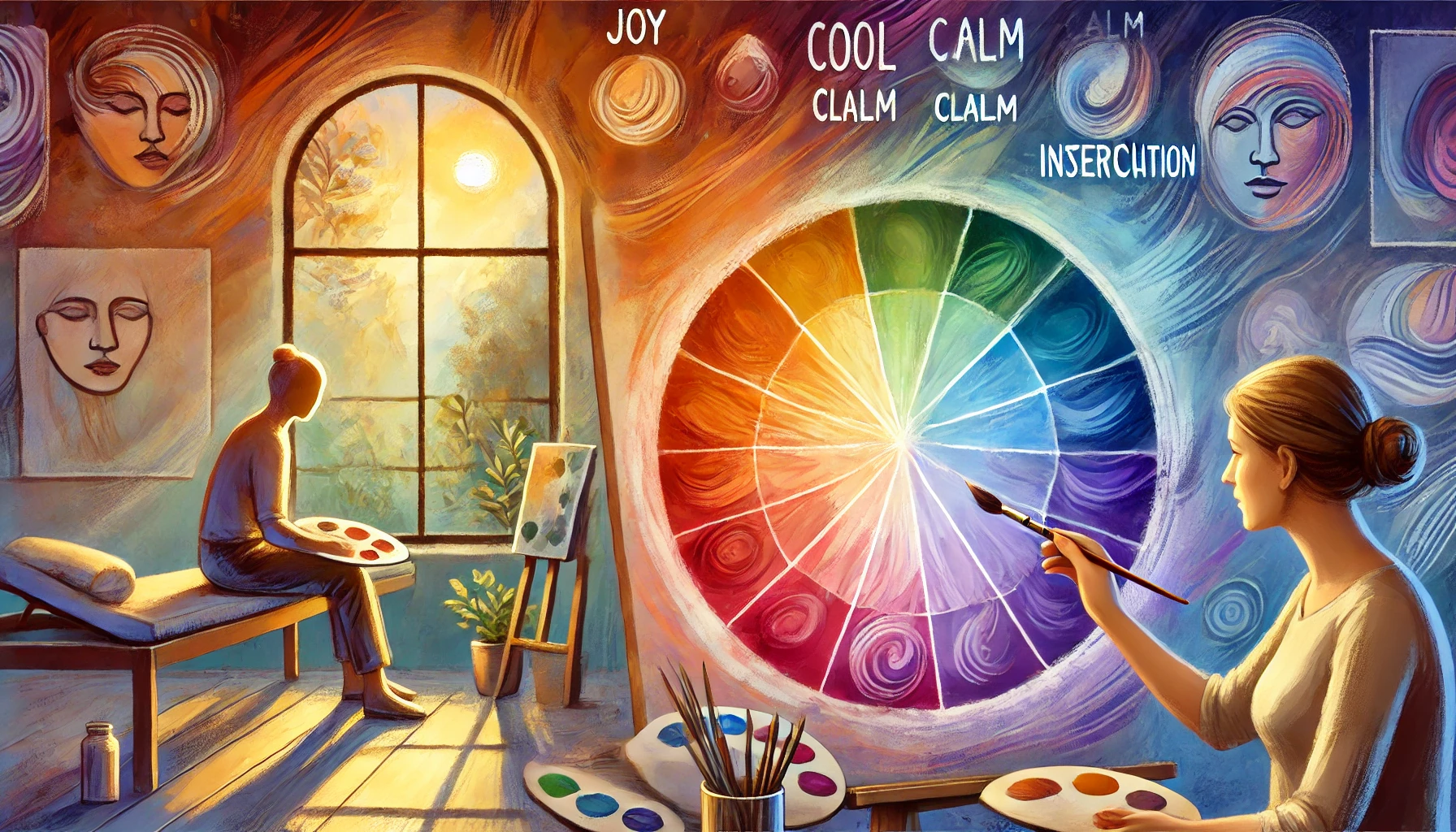
The Color Wheel of Emotions: How Colors Impact Your Mood During Art Therapy
Art therapy is a powerful tool for self-expression and emotional healing, and color plays a starring role in this process. From the warm hues of a sunrise to the cool tones of a quiet forest, colors evoke feelings that can transform your mood and help you process complex emotions.
What is the Color Wheel of Emotions?
The “color wheel of emotions” is a concept that links colors to specific emotional states. Rooted in psychology, this tool helps people articulate feelings that might be hard to put into words. For instance, red often symbolizes passion or anger, while blue evokes calm or sadness. Understanding these associations can help you choose colors intentionally during art therapy sessions.
The Psychology of Color in Art Therapy
Warm Colors (Red, Orange, Yellow): These hues are energetic and stimulating. They can evoke feelings of warmth, happiness, and excitement but might also bring out emotions like anger or urgency. For those dealing with lethargy or sadness, incorporating warm colors into artwork can offer a much-needed emotional boost.
Cool Colors (Blue, Green, Purple): Cool tones are soothing and promote introspection. Blue is often associated with tranquility, while green represents growth and renewal. Purple, a mix of red and blue, can evoke a sense of creativity and mystery. These colors are particularly useful when seeking calm and focus during overwhelming times.
Neutral Colors (Black, White, Gray): Neutral tones often symbolize balance or transition. White can represent clarity or new beginnings, while black and gray may reflect a sense of grounding or introspection. These colors are powerful for processing grief or exploring deep emotions.
How Art Therapy Uses Color
In art therapy sessions, therapists may encourage individuals to choose colors that resonate with their current emotional state. For example, someone experiencing anxiety might work with calming blues and greens, while a person feeling stuck might use dynamic yellows and oranges to inspire movement and energy.
Additionally, exploring your emotional connection to certain colors can be enlightening. You might ask yourself: Why do I feel drawn to this shade? or What memories does this color evoke?
Practical Exercise: Painting Your Mood
Try this simple exercise at home:
- Close your eyes and take a deep breath. Reflect on your emotions.
- Choose colors that you feel represent your mood without overthinking.
- Use these colors to create an abstract piece—swirls, shapes, or lines. Let your emotions guide you.
- When you’re finished, take a step back and observe. How does the artwork reflect your inner state? Do the colors bring you comfort or insight?
The Healing Power of Color
Colors are more than just pigments—they are emotional catalysts that can help you process and heal. Whether you’re painting your feelings, exploring a rainbow of emotions, or simply appreciating the world’s natural palette, art therapy shows us that every color has a role to play in our journey to well-being.
So, grab a brush and let the color wheel of emotions guide you toward clarity and balance.
